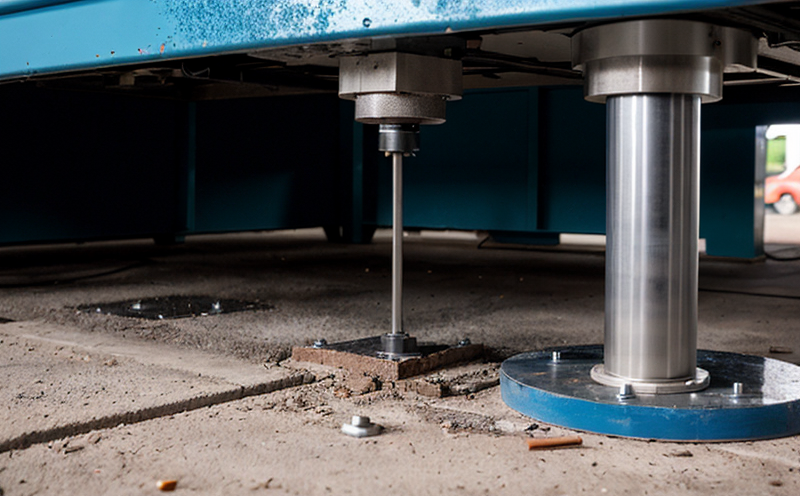ASTM E837 Strain-Gage Hole Drilling Method for Distortion Analysis
The ASTM E837 standard outlines a method for quantifying distortional effects in parts produced using additive manufacturing (AM) and 3D printing technologies. This technique is particularly useful as AM processes can introduce significant residual stresses into the material, leading to potential deformations or distortions during cooling and processing.
The ASTM E837 strain-gage hole drilling method involves creating small holes in the test specimen using a strain gage. The holes are strategically placed so that they capture the strain distribution within the part. By analyzing these strains, engineers can assess the distortion levels and understand how the material behaves under different conditions.
This method is critical for ensuring the quality of AM parts used in various sectors such as aerospace, automotive, and medical devices where precision and reliability are paramount. The testing process helps manufacturers identify potential issues early on, allowing for corrective measures to be implemented before production ramps up or final products are delivered to customers.
The ASTM E837 method is widely accepted by industries that rely heavily on AM technologies due to its accuracy and repeatability. It provides a standardized approach that ensures consistent results across different labs and facilities. This standardization is crucial for maintaining quality control in an environment where new materials and processes are constantly being developed.
One of the key advantages of this method is its ability to provide detailed insights into the internal stresses within AM parts. These stresses can arise from factors such as layer-by-layer deposition, heat treatment, and material properties. By monitoring these stresses, manufacturers can optimize their production processes to minimize distortions and improve overall part performance.
The ASTM E837 method also offers a non-destructive way of evaluating the integrity of AM parts. Unlike some other testing methods that require cutting or altering the specimen, this technique allows for in-situ monitoring without compromising the structural integrity of the part. This makes it an ideal choice for production environments where minimizing downtime and preserving expensive materials is essential.
In addition to its technical merits, the ASTM E837 method also plays a role in advancing research and development efforts within the AM community. By providing reliable data on distortion levels, this standard helps researchers identify areas for improvement in both materials science and process engineering.
For organizations looking to adopt or refine their AM processes, adhering to the ASTM E837 standard can provide several benefits. It ensures that tests are conducted consistently across different facilities, leading to more reliable data that can be used to make informed decisions about production methods. Moreover, compliance with this standard may enhance an organization's reputation within its industry, demonstrating a commitment to quality and innovation.
The ASTM E837 method is particularly important for industries where precision and reliability are critical, such as aerospace, automotive, and medical devices. In these sectors, even small deviations from expected performance can have significant consequences. By using this standard, manufacturers can ensure that their AM parts meet the highest quality standards.
Overall, the ASTM E837 strain-gage hole drilling method provides a robust framework for assessing distortional effects in AM parts. Its widespread acceptance and use across various industries underscore its value as a tool for ensuring product integrity and reliability.
International Acceptance and Recognition
- The ASTM E837 method is widely accepted by industries relying heavily on additive manufacturing technologies.
- It ensures consistent results across different labs, enhancing the reliability of test data.
- The standard is recognized for its accuracy in quantifying distortional effects in AM parts.
Environmental and Sustainability Contributions
- ASTM E837 promotes non-destructive evaluation, minimizing material waste during testing.
- The method aids in optimizing production processes to reduce energy consumption and emissions associated with manufacturing.
Competitive Advantage and Market Impact
ASTM E837 provides a robust framework for assessing distortional effects in AM parts, ensuring product integrity and reliability. This standard contributes significantly to the competitive advantage of organizations that adopt it by providing reliable data for informed decision-making.
The widespread acceptance and use across various industries underscore its value as a tool for maintaining quality control in an environment where new materials and processes are constantly being developed. By adhering to this standard, manufacturers can ensure consistent results, enhance their reputation within the industry, and stay ahead of competitors.





